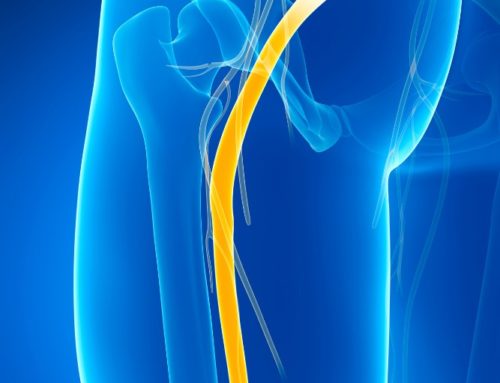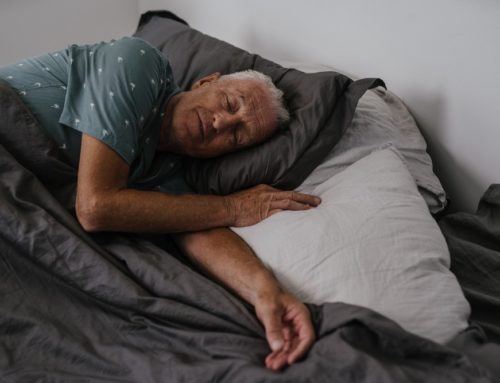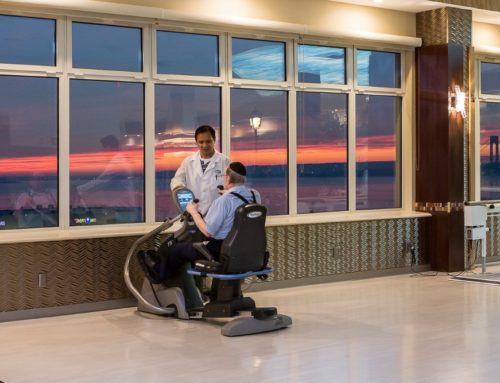Short instances of back pain are uncomfortable, but rest is usually all you need to recover. When the discomfort is long-lasting, it disrupts your work and home routine. For some, increased physical activity or dietary changes could reduce the issue. But chronic low back pain could indicate an injury or medical condition requiring treatment or surgery to repair.
Regardless of the cause, your doctor may recommend physical therapy as a treatment. A trained therapist creates a customized exercise program, taking into account your condition, medical history, limitations, and goals. Physical activity strengthens the back muscles for better spine support, flexibility, and alignment, reducing pain. Learning possible causes and complications could also prevent future occurrences, which we’ll discuss below.

Chronic Low Back Pain: Reasons It Never Goes Away
Minor injuries or strains could cause minimal bodily pain, but once healed, it usually goes away. Chronic lower back pain is more severe, often caused by an injury or medical condition, such as rheumatoid arthritis, disc dislocation, and others. If left untreated, it may never heal and could worsen over time.
In some cases, back pain occurs due to lifestyle factors. Weight gain causes stress on the back, resulting in discomfort. Lack of exercise weakens the muscles until they cannot support the spine. Trying to lift, pull, or move heavy objects also strain the back, often resulting in serious injuries. Even your age, genetics, or stress levels could cause ongoing back troubles.
Though strains or sprains are the most common causes, some medical conditions could also result in chronic lower back pain. Between the spine’s vertebrae are discs, which could compress or break down, causing hernia or degenerative disc disease. Spondylolisthesis occurs when the vertebrae shift from their usual spot.
Spinal stenosis is another possible cause, occurring when the spinal canal narrows, putting pressure on the cord and nearby nerve roots. Arthritis, osteoporosis, or fibromyalgia may also result in back pain. Though some conditions are curable, others are only manageable, causing long-term problems.
There is another reason which is chronic stress and anxiety. High stress levels can lead to muscle tension and exacerbate back pain.
Common complications
According to recent studies, chronic lower back pain was the leading disability cause in 2015. This is no surprise since such discomfort can make movement unbearable, even when doing something you like.
Though weight gain causes back issues, it’s also a complication associated with such pain. Movement becomes uncomfortable, resulting in sedentary behavior. Stress and depression from the condition may trigger emotional eating, and lack of movement prevents burning those excess calories.
Those with chronic lower back pain may also suffer from insomnia. You may have trouble finding comfortable sleeping positions or wake up throughout the night. Even depression, anxiety, and stress associated with the condition could alter sleep habits.
Engage in exercises that target the core muscles, such as gentle abdominal strengthening and back extension exercises. A strong core helps support the spine.
When to see a doctor?
Mild back pain is often nothing to be concerned about. However, some symptoms could indicate an injury or medical problem. These may include pain that continues for several weeks, increases in intensity, or spreads to one or both legs. Tingling, numbness, or weakness in the legs, fever, bladder or bowel issues, or unusual weight loss are also worrisome symptoms.
If any of these issues occur after an injury, like a fall or accident, they could indicate unseen damage. If they happen without a known cause, they may be signs of a medical condition. Either way, speak to your doctor to find the cause since further treatment may be necessary.
Consider yoga or stretching exercises for flexibility and muscle strength. However, it’s also important to do the right exercises for your lower back and not to do those that can worsen your condition.
Resources:
- Mayo Clinic, Back Pain
https://www.mayoclinic.org/diseases-conditions/back-pain/symptoms-causes/syc-20369906 - NIAMS, Back Pain
https://www.niams.nih.gov/health-topics/back-pain - NIAMS, Spinal Stenosis
https://www.niams.nih.gov/health-topics/spinal-stenosis - PubMed, Oct 8, 2016, Global, regional, and national incidence, prevalence, and years lived with disability for 310 diseases and injuries, 1990-2015: a systematic analysis for Global Burden of Disease Study 2015
https://pubmed.ncbi.nlm.nih.gov/27733282/ - PubMed, February 15, 2012, “The more pain I have, the more I want to eat”: obesity in the context of chronic pain
https://pubmed.ncbi.nlm.nih.gov/22334258/ - Keck Medicine of USC, May 25, 2023, What’s the Connection Between Insomnia and Back and Neck Pain?
https://www.keckmedicine.org/blog/chronic-back-and-neck-pains-close-connection-to-insomnia-2/ - National Institute of Health: Yoga and Stretching eases Low Back Pain, October 31, 2011:
https://www.nih.gov/news-events/nih-research-matters/yoga-or-stretching-eases-low-back-pain
This content comprises informative and educational resources only and can not be considered as a substitute for professional health or medical guidance. Reliance on any information provided in this article is solely at your own risk. If you have any inquiries or apprehensions about your medical condition or health goals, talk with a licensed physician or healthcare provider.






Leave A Comment